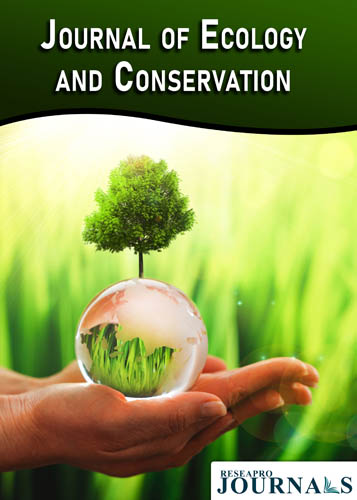
Journal of Ecology and Conservation
OPEN ACCESS
ISSN: 3048-5177

OPEN ACCESS
ISSN: 3048-5177

1Department of Botany, Amrit Science College, Kathmandu, Nepal
2Department of Botany, Tribhuban University, Kathmandu, Nepal
Objective: The study aimed to evaluate the population size of Swertia chirayita across different environmental gradients.
Methodology: Systematic sampling was conducted in three locations within the Gorkha district of Nepal (Laprak, Barpak, and Kashigaun), covering elevations from 1860 to 2825 meters above sea level (masl). Soil samples were analyzed for pH, nitrogen, organic carbon, and phosphorous content. Data analysis was performed using SPSS, R, and Excel.
Results: Soil pH ranged from 3.2 to 5.9, nitrogen content from 0.01% to 0.14%, and organic carbon from 0.3% to 4.65%. Phosphorous content varied between 47.84 kg/ha and 85.9 kg/ha. The slope angle ranged from 19.7° to 37.4°. Swertia chirayita density was positively correlated with soil nitrogen (0.57) and organic carbon (0.61) but negatively correlated with phosphorous content (-0.61). The plant showed non-uniform distribution, with populations influenced by edaphic factors and invasive species.
Conclusion: The study found that S. chirayita distribution was either contagious or random, influenced by soil nutrients and invasive species. This plant grows best in nitrogen-rich and organic carbon-rich soils but does not thrive in high-phosphorous environments.
Received 15 August 2024; Revised 27 August 2024; Accepted 05 September 2024
1Department of Botany, Amrit Science College, Kathmandu, Nepal
2Department of Botany, Tribhuban University, Kathmandu, Nepal